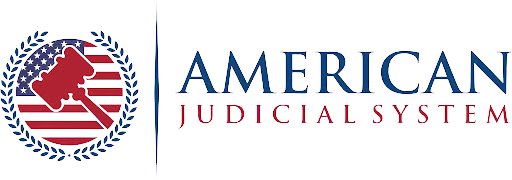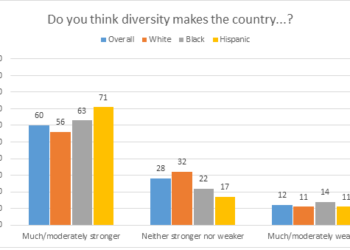Most people never see the companies protecting federal facilities and classified missions. Security infrastructure at sensitive government sites operates invisibly to the public, yet it’s absolutely critical to national operations. Behind every secure site is a network of trained personnel, clearance protocols, and trust-based relationships that enable classified work to happen safely.
That infrastructure isn’t built by accident. It’s built by government security contractors who understand federal requirements and maintain the professionalism that sensitive work demands. That hidden infrastructure represents the backbone supporting critical national security operations.
Federal facilities contain classified information and sensitive operations that require protection beyond standard commercial security. The security challenges differ fundamentally from protecting retail locations or office buildings. Personnel must be vetted extensively before access is granted. Security protocols must satisfy federal requirements that exceed standard industry practices. Communication infrastructure must be protected against sophisticated threats. That complexity requires specialized expertise that government security contractors bring to federal work.
These organizations employ trained professionals who meet federal standards and maintain clearances. They operate according to federal regulations and compliance requirements. They form the invisible shield protecting classified missions that Americans depend on without realizing it. That’s what government security contractors actually deliver.
The Quiet Backbone of Federal Security
Private firms supporting public missions represent a hybrid approach to federal security. The government doesn’t employ all security personnel directly. Instead, it contracts with specialized companies to provide security services. That outsourcing allows government to access expertise and capacity that internal hiring alone couldn’t provide. Private contractors bring specialized knowledge and operational flexibility that supports federal missions effectively.
Integration between government agencies and private contractors creates seamless security operations. Federal oversight ensures that contractors meet stringent standards. Contractors maintain equipment, train personnel, and operate security systems according to federal specifications. That partnership approach leverages private sector efficiency while maintaining government control and accountability. The result is security infrastructure that works reliably across federal facilities nationwide.
Trust relationships between government agencies and contractors develop over years of reliable performance. Contractors that consistently meet requirements earn increased responsibility and access to more sensitive operations. That trust reflects proven competence and reliability demonstrated through years of professional service. Those relationships matter profoundly because federal security depends on knowing that contractors will perform reliably under pressure and maintain professionalism regardless of circumstances.
Training That Sets Standards Higher
Forty-hour programs provide foundational security training covering federal requirements and operational standards. That basic training establishes competency in security fundamentals and federal protocols. Training covers access control, incident response, threat identification, and communication procedures. Comprehensive training ensures that personnel understand federal expectations and their role in maintaining security.
Clearance vetting requires extensive background investigation and ongoing reinvestigation. Personnel must pass security clearance investigations that examine financial history, criminal background, foreign contacts, and reliability. That investigation process ensures that only trustworthy individuals gain access to classified information. Ongoing reinvestigation maintains security standards by periodically confirming that personnel remain reliable and trustworthy throughout their employment.
Continuous education maintains competency as security threats and federal requirements evolve. Personnel receive training updates on new threats, new technology, and changing procedures. That ongoing education ensures that security operations remain current and effective. Training that stops after initial hire becomes outdated quickly because threats change constantly. Contractors committed to excellence maintain training programs that keep personnel current throughout their careers.
The Clearance Process Demystified
Secret clearance represents the baseline level of access for federal facility work. Secret clearance investigations examine background information and determine trustworthiness for access to classified information at the Secret level. The investigation process typically takes months and includes interviews with references and investigation of background claims. Personnel with Secret clearance can access specific classified materials and spaces within federal facilities.
Top Secret clearance provides access to more sensitive classified information than Secret level. Top Secret investigations examine background more extensively and investigate potential vulnerabilities that could affect security. Personnel with Top Secret clearance access more sensitive operations and information. The clearance process is longer and more intensive than Secret level investigations because the security stakes are higher.
Top Secret/Sensitive Compartmented Information (TS/SCI) clearance represents the highest security level for most federal work. TS/SCI investigations are most extensive and include detailed background examination and security interviews. Personnel with TS/SCI clearance access the most sensitive classified operations and compartmented information. That clearance level requires demonstrated trustworthiness and reliability under the most intense security scrutiny.
Retention, Trust, and Long-Term Partnerships
Culture within security contractor organizations determines whether personnel remain committed or seek employment elsewhere. Organizations that treat personnel professionally and provide career advancement opportunities retain experienced staff. That retention matters profoundly because experienced personnel understand federal requirements deeply and provide continuity that new employees can’t match. Investment in personnel culture translates into retention that benefits security operations.
Compliance with federal requirements must be continuous and unwavering. Contractors who view compliance as minimum acceptable standard rather than baseline excellence eventually fail. Organizations committed to exceeding federal requirements deliver superior security. That commitment to compliance reflects organizational values that prioritize security above all other considerations. Federal agencies recognize and reward contractors who demonstrate that commitment through consistent performance.
Long-term partnerships develop between government agencies and contractors that consistently demonstrate reliability and excellence. Those partnerships enable agencies to rely on contractors for increasingly important operations. Contractors that earn trust through years of professional performance become valued partners in federal security infrastructure. That trust reflects proven competence and demonstrated commitment to protecting classified missions and federal facilities.
Conclusion
Government security contractors form the invisible shield protecting critical national operations. That infrastructure remains hidden from public view yet it’s absolutely essential to federal security. These organizations employ trained professionals who maintain clearances and operate according to federal standards. That specialization and commitment to excellence enables classified work to happen safely.
Federal security depends fundamentally on contractors who understand requirements and maintain professionalism regardless of circumstances. Trust relationships developed through years of reliable performance enable government to rely on private sector expertise. That hybrid model of government oversight and private contractor operation creates security infrastructure that works effectively.
The government security contractors protecting federal facilities and classified missions represent critical national infrastructure. Their work remains invisible to most Americans, yet it enables sensitive operations that Americans depend on for security. That hidden infrastructure deserves recognition as the backbone supporting critical national security operations.









